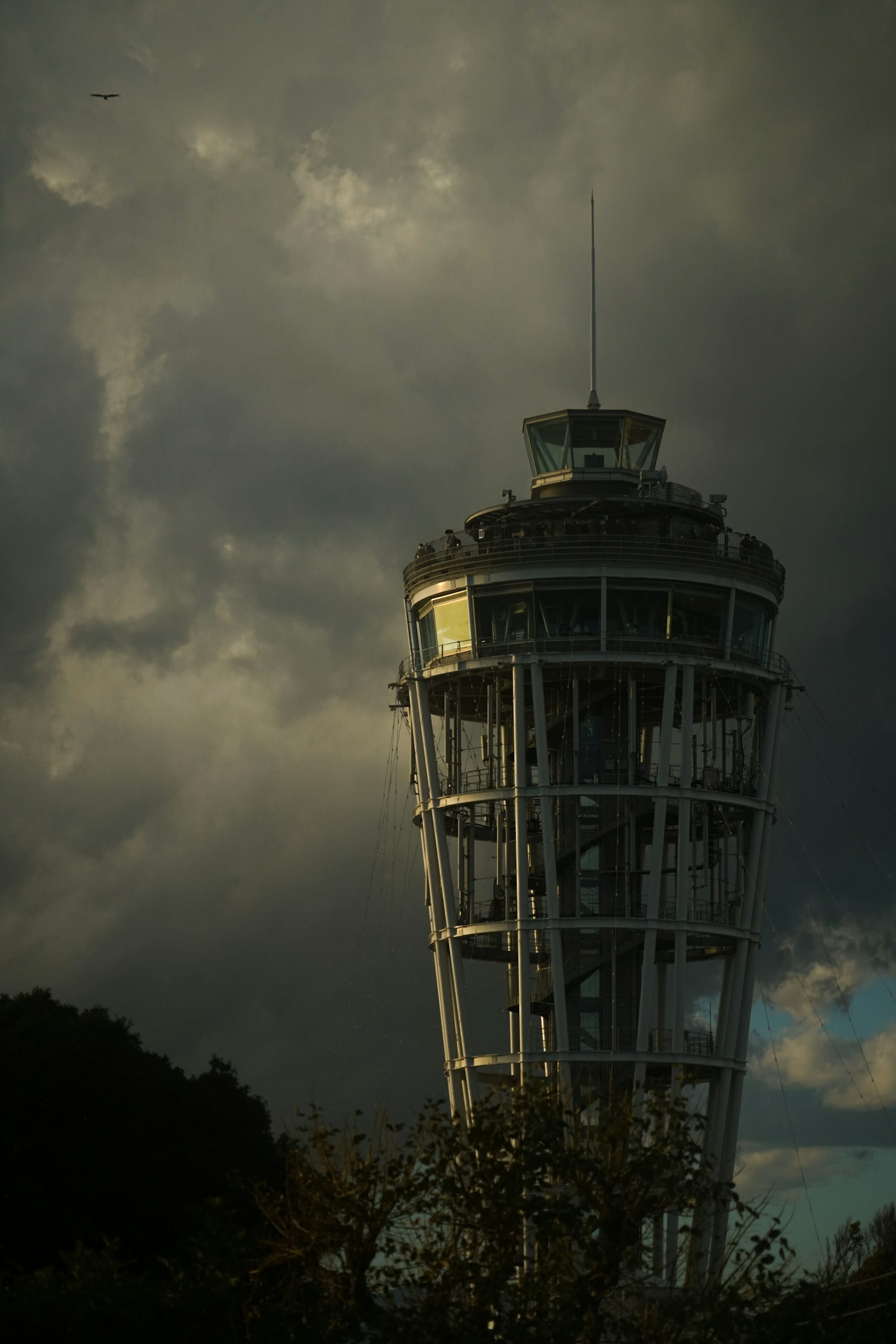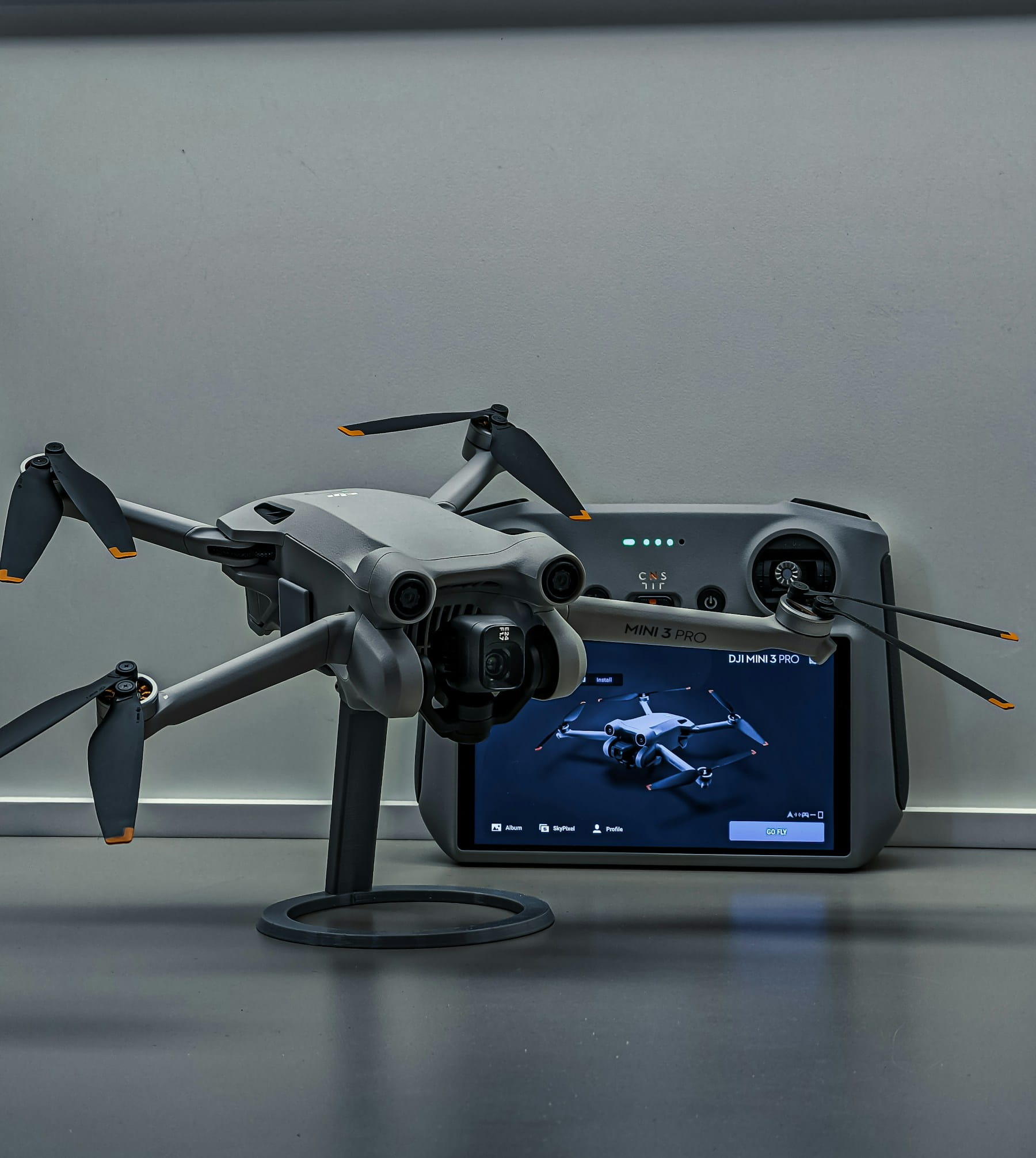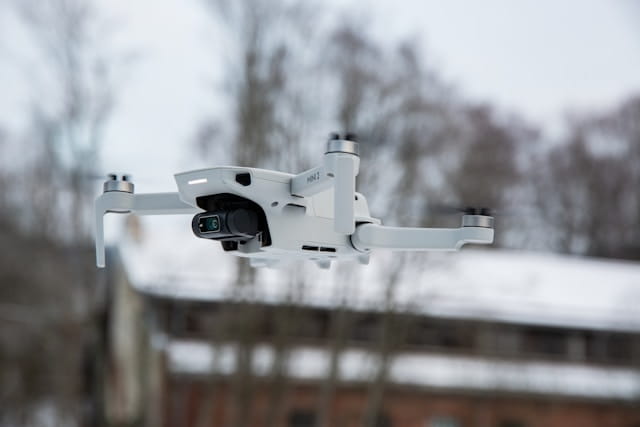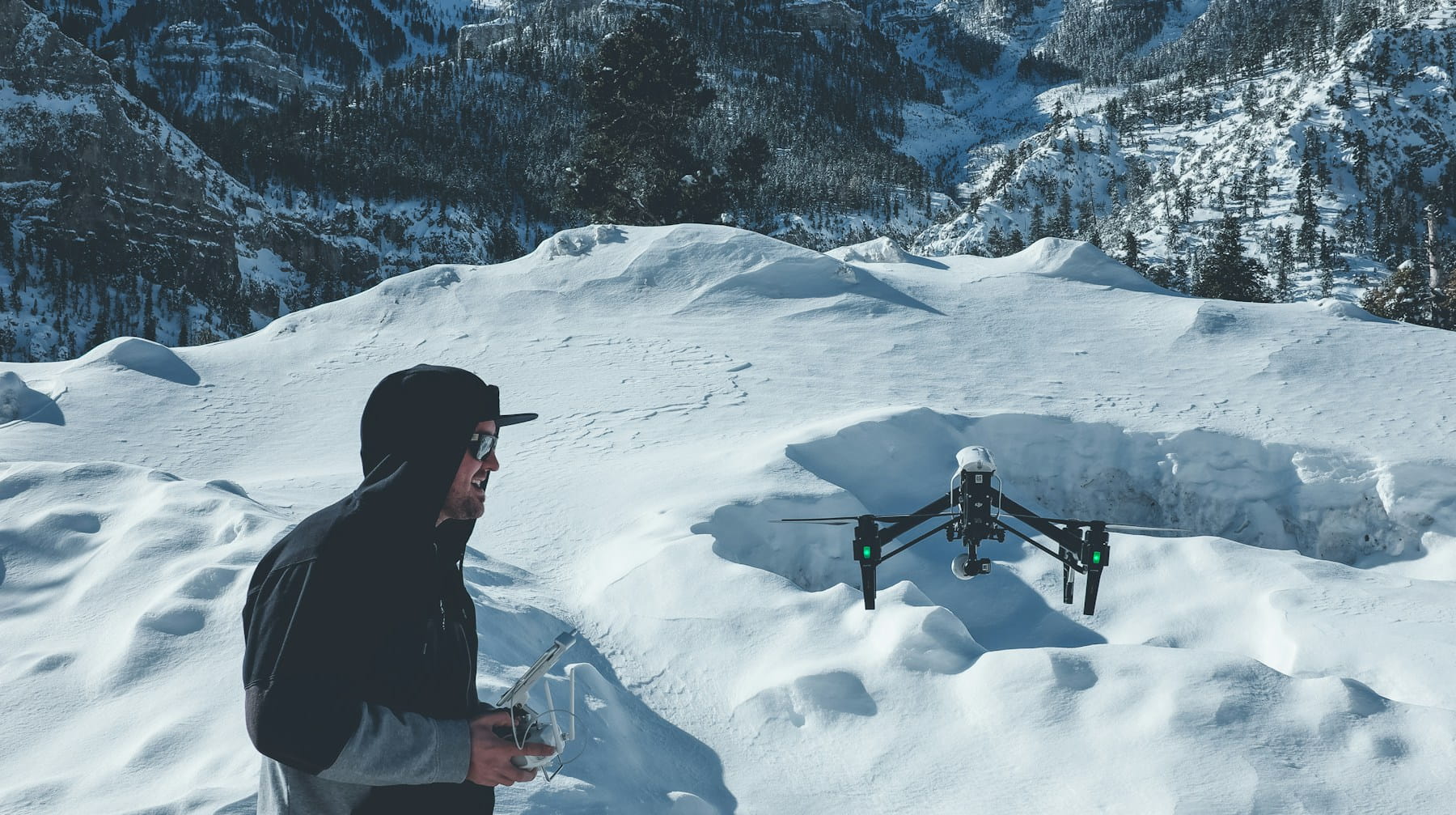Learn what METAR is, how it provides essential aviation weather data, and how drone operators can interpret these coded reports for safe and efficient flight planning in various weather conditions.
Weather reports can make or break a flight mission. For pilots and drone operators, understanding meteorological conditions isn't just helpful—it's mandatory for safe operations.
METAR represents the global standard for aviation weather reporting. These coded messages deliver current atmospheric conditions at airports and weather stations worldwide, providing the data pilots need to make informed flight decisions.
But here's the thing: METAR codes look like alphabet soup to the untrained eye. A typical report might read "METAR KJFK 121251Z 24016G24KT 10SM FEW250 21/M04 A3012 RMK AO2 SLP221 T02111044." That's not exactly user-friendly, right?
The good news? Once you crack the code, these reports become incredibly valuable tools for flight planning and safety assessment. Just like understanding Remote ID compliance is essential for legal operations, mastering METAR interpretation is crucial for safe drone flights.
Table of contents
- METAR definition and purpose
- METAR history and development
- Core components of METAR reports
- METAR format breakdown
- Weather phenomena codes
- Cloud reporting in METAR
- Wind information decoding
- Visibility and atmospheric conditions
- Temperature and pressure readings
- Special reports and SPECI
- International vs North American formats
- METAR for drone operations
- Reading METAR examples
- Accessing METAR data
- Common METAR abbreviations
- Practical implementation tips
METAR definition and purpose
METAR stands for Meteorological Terminal Aviation Routine Weather Report (though some sources define it as Meteorological Aerodrome Report). These standardized weather observations serve as the backbone of aviation meteorology worldwide.
The International Civil Aviation Organization (ICAO) oversees METAR standardization. This ensures that a pilot in Tokyo can read a weather report from London using the same format and codes. Pretty neat, considering the complexity of global aviation operations.
Weather stations generate METAR reports at regular intervals—typically every hour, though some locations issue them more frequently. Airports, military bases, and dedicated weather observation sites all contribute to the global METAR network.
The reports serve multiple purposes beyond basic weather information. Air traffic control uses them for runway operations. Airlines incorporate METAR data into fuel planning calculations. Flight training schools teach METAR interpretation as a core skill.
For drone operators, METAR reports provide ground-level weather conditions that directly impact small unmanned aircraft. Wind speed, visibility, and precipitation data from these reports help determine whether conditions are suitable for drone operations. Understanding weather conditions is just as important as maintaining comprehensive compliance with regulatory requirements.
METAR history and development
The METAR system launched internationally on January 1, 1968. Before this standardization, countries used various weather reporting formats that created confusion for international aviation.
North America held onto its Surface Aviation Observation (SAO) format until June 1, 1996. The transition to METAR represented a significant milestone in global aviation standardization, though North American reports still include some regional variations.
The World Meteorological Organization (WMO) publishes the official METAR specifications in Publication No. 782, "Aerodrome Reports and Forecasts." This document serves as the authoritative guide for weather observers and aviation professionals worldwide.
Since implementation, METAR has undergone several modifications to accommodate technological advances and changing aviation needs. Automated weather stations now generate most reports, replacing human observers at many locations.
The evolution from manual observations to automated systems has improved report frequency and consistency. However, human observers still provide valuable input at major airports where complex weather phenomena require expert interpretation.
Core components of METAR reports
Every METAR report contains specific elements arranged in a standardized sequence. Understanding this structure helps decode even the most complex weather observations.
The basic METAR format includes these mandatory elements:
- Station identifier (ICAO airport code)
- Observation time and date
- Wind direction and speed
- Visibility conditions
- Weather phenomena (if present)
- Cloud cover and ceiling heights
- Temperature and dew point
- Barometric pressure setting
Optional elements may include runway visual range, weather trends, and supplementary remarks. The specific content depends on local weather conditions and station capabilities.
Station identifiers use the four-letter ICAO airport codes. These differ from the three-letter IATA codes commonly seen on airline tickets. For example, Los Angeles International Airport uses KLAX in METAR reports but LAX for passenger services.
Observation times appear in UTC (Coordinated Universal Time), also known as Zulu time. This eliminates confusion across time zones and provides a universal reference point for aviation operations.
METAR format breakdown
Let's dissect a typical METAR report to understand each component:
METAR KJFK 121251Z 24016G24KT 10SM FEW250 21/M04 A3012 RMK AO2
Breaking this down piece by piece:
METAR indicates this is a routine hourly observation (as opposed to a special report).
KJFK identifies John F. Kennedy International Airport as the reporting station.
121251Z shows the observation time: the 12th day of the month at 1251 UTC.
24016G24KT describes wind conditions: from 240 degrees at 16 knots, gusting to 24 knots.
10SM indicates visibility of 10 statute miles.
FEW250 reports few clouds at 25,000 feet above ground level.
21/M04 gives temperature (21°C) and dew point (minus 4°C).
A3012 shows altimeter setting of 30.12 inches of mercury.
RMK AO2 begins the remarks section, noting this is an automated station with precipitation discrimination capability.
The systematic arrangement allows quick scanning for specific information. Pilots can rapidly assess whether conditions meet their operational requirements.
Weather phenomena codes
METAR uses standardized abbreviations to describe precipitation, obscuration, and other weather phenomena. These codes provide precise information about current conditions affecting flight operations.
The following table shows common weather phenomenon codes:
| Code | Description | Intensity |
|---|---|---|
| RA | Rain | - (light), none (moderate), + (heavy) |
| SN | Snow | - (light), none (moderate), + (heavy) |
| DZ | Drizzle | - (light), none (moderate), + (heavy) |
| FG | Fog | Visibility less than 1km |
| BR | Mist | Visibility 1-5km |
| HZ | Haze | Dry particles reducing visibility |
| TS | Thunderstorm | Can occur with or without precipitation |
| SH | Showers | Intermittent precipitation |
| FZ | Freezing | Prefix for freezing precipitation |
Weather intensity appears before the phenomenon code. A minus sign (-) indicates light intensity, no prefix means moderate, and a plus sign (+) shows heavy conditions.
Descriptors can modify precipitation types. For example, SHRA means rain showers, while FZRA indicates freezing rain. These distinctions matter significantly for flight safety.
Multiple weather types can occur simultaneously. RASN represents mixed rain and snow, while TSRA indicates thunderstorms with rain. The codes prioritize the most significant weather first.
Cloud reporting in METAR
Cloud information plays a critical role in flight planning and safety decisions. METAR reports describe cloud coverage using standardized terms that indicate how much sky the clouds obscure.
Cloud coverage appears in eighths of sky coverage, called oktas:
SKC - Sky clear (no clouds detected)
FEW - Few clouds (1-2 oktas)
SCT - Scattered clouds (3-4 oktas)
BKN - Broken clouds (5-7 oktas)
OVC - Overcast (8 oktas, complete coverage)
Numbers following the coverage indicate cloud base height in hundreds of feet above ground level. BKN015 means broken clouds with bases at 1,500 feet.
Multiple cloud layers can exist simultaneously. A report might show SCT008 BKN015 OVC030, indicating scattered clouds at 800 feet, broken at 1,500 feet, and overcast at 3,000 feet.
Special cloud types receive specific notation:
- TCU indicates towering cumulus clouds
- CB marks cumulonimbus (thunderstorm) clouds
- VV shows vertical visibility when fog obscures normal cloud observation
The lowest broken or overcast layer defines the ceiling—a crucial measurement for instrument flight rules and approach procedures.
For drone operations, cloud ceilings determine legal operating altitudes in many jurisdictions. Low ceilings can restrict flight activities or require special authorization.
Wind information decoding
Wind data in METAR reports provides direction and speed information critical for safe aircraft operations. The format follows a specific pattern that becomes intuitive with practice.
Wind appears as a five or six-digit group. The first three digits show direction in tens of degrees from true north. The next two or three digits indicate speed.
24016KT means wind from 240 degrees at 16 knots. The KT suffix specifies knots as the unit of measurement. Some international stations use MPS (meters per second) instead.
Variable wind directions appear when conditions are gusty or unstable. 24016G24KT shows steady winds at 16 knots with gusts to 24 knots. Gusts must exceed steady wind speed by at least 10 knots to be reported.
Light and variable winds appear as VRB03KT, indicating variable direction at 3 knots. This typically occurs during calm conditions when wind direction changes frequently.
Calm winds show as 00000KT—no direction or speed. These conditions often occur during clear, stable weather patterns.
Some stations report wind direction variability. 21010KT 180V240 means winds from 210 degrees at 10 knots, varying between 180 and 240 degrees. This information helps pilots anticipate changing crosswind components during approach and landing.
Visibility and atmospheric conditions
Visibility measurements in METAR reports indicate how far pilots can see horizontally from the observation point. This information directly affects flight operations and regulatory compliance.
In the United States, visibility appears in statute miles. 10SM means 10 statute miles visibility—considered excellent conditions for most operations. Visibility can range from fractions of a mile in dense fog to values exceeding 10 miles.
International stations typically report visibility in meters. 9999 represents visibility of 10 kilometers or greater, while 0400 indicates 400 meters visibility.
Runway Visual Range (RVR) provides more precise visibility information for specific runways. R04L/2400FT means runway 04 Left has an RVR of 2,400 feet. This measurement uses specialized equipment to determine visibility along the runway approach path.
Variable visibility appears when conditions change rapidly. 1/2V2SM indicates visibility varying between one-half mile and 2 miles—common during passing fog or precipitation.
Directional visibility reports different visibility in various directions from the airport. This occurs when weather systems affect only part of the airport area.
For drone operations, visibility requirements vary by jurisdiction and operation type. Visual line of sight rules typically require specific minimum visibility conditions for safe operation. Operators should integrate visibility assessment into their standard risk assessment protocols.
Temperature and pressure readings
Temperature and atmospheric pressure information helps pilots calculate aircraft performance and make operational decisions. These measurements appear in standardized formats within METAR reports.
Temperature and dew point appear as 21/M04, indicating temperature of 21°C and dew point of minus 4°C. The M prefix denotes temperatures below zero Celsius. Both measurements use the same scale for consistency.
Temperature spreads (the difference between temperature and dew point) indicate atmospheric moisture content. Small spreads suggest high humidity and potential fog formation. Large spreads indicate dry conditions with lower fog probability.
Barometric pressure appears as altimeter setting—the pressure reading pilots use to calibrate aircraft altimeters. A3012 means 30.12 inches of mercury in North American format. International reports use Q1020 format, indicating 1,020 hectopascals.
Rapid pressure changes can indicate approaching weather systems. Some stations include pressure trend information in remarks sections to alert pilots to changing conditions.
Extreme temperatures affect aircraft performance significantly. Hot temperatures reduce engine performance and increase takeoff distances. Cold temperatures can cause instrument errors and affect fuel planning.
Special reports and SPECI
SPECI reports provide weather updates between regular METAR observations when significant changes occur. These special reports alert pilots to rapidly changing conditions that could affect flight safety.
Weather observers issue SPECI reports when specific criteria are met:
- Visibility changes crossing specific thresholds
- Wind speed changes exceeding predetermined limits
- Weather phenomena beginning or ending
- Significant cloud coverage changes
- Temperature changes beyond established parameters
The format mirrors regular METAR reports but uses SPECI instead of METAR as the identifier. Time stamps show when the observation was taken, not the next scheduled report time.
SPECI reports often capture transitional weather conditions. Thunderstorm passages, fog formation and dissipation, and wind shifts commonly trigger these special observations.
Automated weather stations generate SPECI reports based on programmed algorithms. Human observers at staffed stations use judgment to determine when conditions warrant special reports.
For time-sensitive operations, SPECI reports provide crucial updates. A pilot monitoring weather for departure might receive a SPECI showing improved conditions before the next hourly METAR.
Drone operators planning missions should monitor both METAR and SPECI reports. Conditions can change rapidly, particularly during unstable weather patterns. This real-time monitoring should be integrated with comprehensive pre-flight safety checks.
International vs North American formats
While METAR follows global standards, regional variations exist between international and North American implementations. These differences reflect local regulatory requirements and measurement preferences.
The most noticeable difference appears in measurement units. North American reports use statute miles for visibility, inches of mercury for pressure, and Fahrenheit-based temperature scales in some calculations. International reports use metric units throughout.
Wind reporting shows subtle variations. North American stations report calm winds as 00000KT, while some international stations use different formats for the same conditions.
Cloud reporting includes regional differences in automated vs. manual observations. North American automated stations use CLR (clear below 12,000 feet) versus SKC (sky clear) from human observers.
Remarks sections vary significantly between regions. North American reports include extensive coded remarks with specific meanings. International reports tend toward more concise remarks sections.
Time references remain consistent globally—all METAR reports use UTC regardless of local time zones. This consistency supports international aviation operations.
Understanding these variations helps when operating internationally. Pilots and drone operators should familiarize themselves with local METAR conventions when operating in different regions.
METAR for drone operations
Drone operators face unique weather considerations that make METAR interpretation particularly valuable. Small unmanned aircraft systems react differently to weather conditions compared to traditional aircraft.
Wind information from METAR reports helps assess drone flight feasibility. Most consumer drones have wind speed limitations well below traditional aircraft capabilities. A METAR showing 25025G35KT might be acceptable for a commercial airliner but prohibitive for drone operations.
Visibility requirements for drone operations often exceed those for instrument-rated pilots. Visual observers must maintain sight of the aircraft throughout the flight, making visibility measurements from METAR reports directly applicable to operational decisions.
Precipitation affects drone operations differently than traditional aircraft. Light rain might not impact a commercial jet but could damage sensitive drone equipment or affect flight stability. METAR precipitation codes help assess these risks.
Temperature extremes impact battery performance in drone operations. Cold temperatures reduce battery capacity and flight time. Hot conditions can cause overheating issues. METAR temperature data supports flight planning calculations.
Cloud ceilings determine legal operating altitudes for many drone operations. Regulations often restrict flights within clouds or require specific clearances from cloud layers. METAR cloud reporting provides the information needed for compliance planning.
Atmospheric pressure affects drone altitude calculations, particularly for operations requiring precise height control. GPS-based altitude systems can show errors during significant pressure changes.
Reading METAR examples
Practice with real METAR examples builds proficiency in weather interpretation. Let's examine several reports from different conditions and locations:
Example 1: Clear conditions METAR KORD 151251Z 27008KT 10SM CLR 18/M02 A3015 RMK AO2 SLP210
This Chicago O'Hare report shows excellent flying weather: winds from 270° at 8 knots, 10-mile visibility, clear skies, temperature 18°C, dew point -2°C, and altimeter setting 30.15 inches.
Example 2: Marginal conditions METAR KBOS 151354Z 09012G18KT 3SM BR BKN008 OVC015 12/11 A2995 RMK AO2 SLP142
Boston shows more challenging conditions: gusty winds, 3-mile visibility in mist, broken clouds at 800 feet with overcast at 1,500 feet, high humidity (temperature and dew point nearly equal), and lower pressure.
Example 3: Poor weather METAR KJFK 151351Z 04015G25KT 1SM +TSRA BKN005 OVC012 15/14 A2988 RMK AO2 TSB35
New York reports severe conditions: strong gusty winds, 1-mile visibility, heavy thunderstorms with rain, very low clouds, and high humidity. These conditions would ground most aviation operations.
Each example demonstrates different decision points for pilots and drone operators. The progression from excellent to poor conditions shows how METAR data supports go/no-go decisions.
Accessing METAR data
Multiple sources provide current METAR data for flight planning and operations. Government agencies, commercial weather services, and aviation apps offer access to global weather observations.
The National Weather Service operates the primary METAR distribution system in the United States. Their Aviation Weather Center website provides real-time reports, forecasts, and analysis tools for aviation users.
Aviation weather apps have revolutionized METAR access for pilots and drone operators. These mobile applications decode reports into plain language and provide additional analysis features like trend information and alerting systems.
Commercial weather services offer enhanced METAR data with value-added features. Some provide historical data analysis, custom alerting, and integration with flight planning software systems.
International aviation weather services provide METAR access for global operations. ICAO maintains coordination standards, but individual countries operate their own distribution systems.
Real-time access has become standard for operational weather monitoring. Automated systems update METAR data within minutes of observation, supporting time-sensitive flight operations.
For drone operations, dedicated UAV weather services are emerging. These specialized platforms focus on low-altitude weather conditions particularly relevant to small unmanned aircraft operations.
Common METAR abbreviations
METAR reports use extensive abbreviations to convey complex weather information efficiently. Memorizing common codes accelerates report interpretation and improves operational decision-making.
Here are frequently encountered abbreviations organized by category:
Station and report identifiers:
- METAR: Routine weather report
- SPECI: Special weather report
- AUTO: Fully automated observation
- COR: Corrected report
Wind and visibility:
- KT: Knots
- G: Gust (as in 15G25KT)
- VRB: Variable wind direction
- SM: Statute miles
- M: Less than (as in M1/4SM)
Weather phenomena:
- VC: In the vicinity (5-10 miles)
- RE: Recent (past hour)
- SH: Showers
- FZ: Freezing
Cloud coverage:
- CLR: Clear below 12,000 feet (automated)
- SKC: Sky clear (human observer)
- NSC: No significant cloud
- CAVOK: Ceiling and visibility OK
Pressure and temperature:
- A: Altimeter setting (North America)
- Q: QNH pressure setting (international)
- T: Precise temperature/dew point data
Remarks section abbreviations:
- RMK: Remarks begin
- AO1/AO2: Automated station type
- SLP: Sea level pressure
- NOSIG: No significant change expected
These abbreviations become second nature with regular use. Many pilots create personal reference cards with common codes for quick consultation during flight planning.
Flight planning software and weather apps increasingly provide decoded METAR information alongside raw reports. However, understanding the original codes remains valuable for situations where interpretation tools aren't available.
Practical implementation tips
Successfully integrating METAR analysis into drone operations requires systematic approaches and attention to both technical and operational details. Start by identifying reliable METAR sources that provide timely updates for your typical operating areas.
For operators with multiple aircraft or regular operations, develop standardized procedures for weather assessment that include METAR review as a mandatory step. Document minimum weather conditions for different operation types and aircraft configurations.
Keep detailed weather logs that correlate METAR data with actual flight conditions. This historical information helps refine decision-making criteria and improves future weather assessments.
Consider how METAR conditions affect different aspects of your operations, from battery performance in extreme temperatures to visibility requirements for specific mission types. These factors should influence your go/no-go decision criteria.
Stay informed about seasonal weather patterns and typical METAR conditions for your regular operating locations. Understanding local weather characteristics improves mission planning and scheduling efficiency.
For commercial operations, integrate METAR requirements into your safety management systems and operational procedures. Train pilots on proper interpretation techniques and ensure weather assessment protocols align with your overall safety management approach.
Why METAR Matters for Professional Drone Operations
METAR interpretation has become a fundamental skill for professional drone operators, creating new responsibilities while providing essential safety information. Understanding these reports isn't just about avoiding weather-related incidents—it's about operating efficiently in varying conditions.
- Safety foundation: METAR data provides the ground-truth weather information needed for informed operational decisions
- Regulatory compliance: Weather assessment demonstrates due diligence required for comprehensive compliance management
- Operational efficiency: Accurate weather interpretation enables better mission planning and scheduling
- Risk management: METAR analysis supports systematic risk assessment protocols
Fast Facts: METAR Components for Drone Operators
| Component | Critical for Drones | Why It Matters |
|---|---|---|
| Wind Speed/Direction | Flight stability, battery consumption | Determines aircraft capability limits |
| Visibility | VLOS compliance, safety margins | Required for regulatory compliance |
| Cloud Ceiling | Altitude restrictions, clearances | Defines legal operating envelope |
| Temperature | Battery performance, equipment function | Affects flight time and reliability |
| Precipitation | Equipment protection, flight safety | Determines operational feasibility |
Getting Started with METAR Analysis
- Learn the basics of METAR format and common abbreviations
- Identify reliable sources for current and historical METAR data
- Establish minimum criteria for different operation types and conditions
- Integrate weather review into standard pre-flight procedures
- Document decisions and correlate METAR data with actual conditions
Essential preparation: Before relying on METAR data for operational decisions, ensure your team understands the relationship between coded reports and actual flying conditions.
In Summary
Whether you're managing a single recreational drone or a fleet of commercial aircraft, effective METAR interpretation requires ongoing attention to weather patterns, equipment limitations, and operational procedures. The investment in weather analysis skills today enables safer and more reliable drone operations tomorrow.
Ready to Streamline Your Weather Planning?
Join drone professionals who are already transforming their operations through systematic weather analysis and mission planning. Whether you're conducting infrastructure inspections, agricultural surveys, or emergency response missions, proper weather assessment gives you the foundation for safe, legal, and efficient operations.
Start your free trial today — no credit card required.
Or book a demo to see how DroneBundle can integrate weather planning, equipment tracking, and regulatory documentation across your entire drone operation.
Weather doesn't have to ground your productivity. With proper tools and METAR knowledge, even challenging conditions become manageable elements in professional drone operations.



